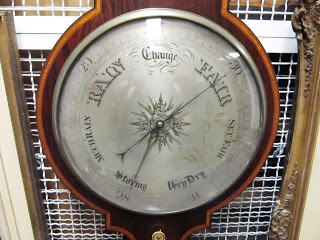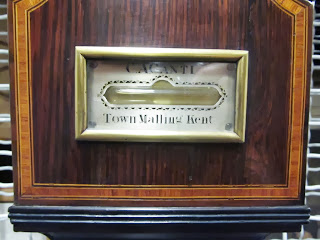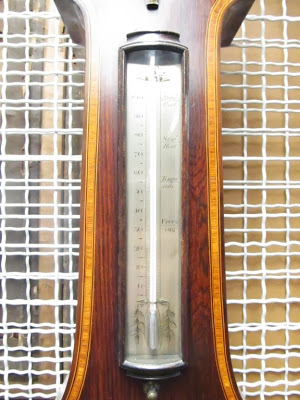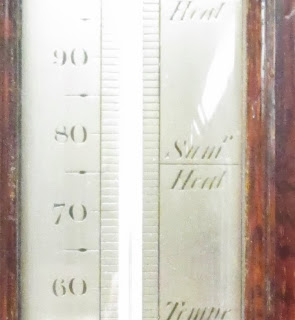It’s about time for my annual heat wave post (check out last year’s post for some great Cruikshank illustrations on how to beat the heat). According to the weather forecasts, we are finally due for some heat-clearing storms, so I thought I’d highlight an item which could be used in understanding and predicting the weather. It is a wheel barometer. (I apologize for the poor image: it is in storage and I couldn’t get far enough away to shoot it square-on).
 |
| C.A. Canti, barometer. English, 19th century. 1954.2021 |
 |
| C.A. Canti, barometer. English, 19th century. 1954.2021 |
 |
| C.A. Canti, barometer. English, 19th century. 1954.2021 |
This kind of barometer is often called a banjo barometer, due to its shape. The long neck holds the necessary tube, and also provides an excellent place to add other useful weather devices–such as a thermometer.
 |
| C.A. Canti, barometer. English, 19th century. 1954.2021 |
It may be hard to see in this picture, but the thermometer is marked at several important points, such as freezing and “blood heat.” I also noticed that “Sumr heat” is clearly marked–right at 76 degrees! Of course this was made in England, which is cooler than here, but they are having their own heat wave now and would probably be quite glad for that level of “summer heat”.
 |
| C.A. Canti, barometer. English, 19th century. 1954.2021 |
Stay cool and remember that a visit to the Rosenbach is wonderfully air-conditioned.

Kathy Haas is the Associate Curator at the Rosenbach Museum & Library.
